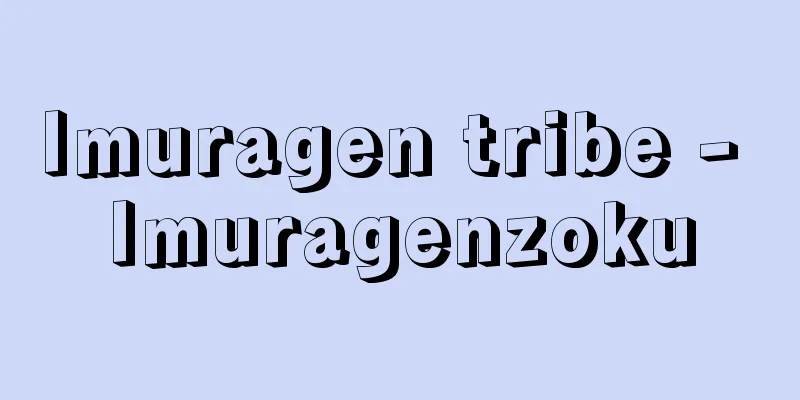Flag

|
A pole or other stick with cloth or paper attached. Its purpose is to indicate something or to act as a signal or sign, and it can be given symbolic meaning and take on a supernatural quality. American Indians erected signal poles on stone masonry as road signs to show the direction to a water source, and property markers such as poles that indicate the ownership of an object and even serve to deter thieves, suggest that these objects originally had the function of a flag. A flag is simply a long, thin pole with a symbol carved or attached to the end, which is thought to have evolved into architectural monuments such as stone pillars and then into flags. In ancient Egypt, military flags were used, including those of kings and royalty, and small flags were also used to decorate pillars in front of temple altars. Throughout the ancient Near East, flags played an important role as battle flags, and were particularly associated with chariots. Meanwhile, in ancient Israel, flags were raised in central locations where people gathered. Cities in ancient Greece also had sacred symbols on their flags, such as the owl and olive in Athens and the sphinx in Thebes. In Greece, the practice of attaching helmets or pieces of armor to the tips of spears was probably influenced by the Near East, where spears and clubs with symbols on the tips were used in battle. In ancient Rome, military standards featured wolves, half-bull, half-man, horses, and wild boars, and eventually the standard of an eagle with its wings spread and an oak leaf in its mouth, which was an omen of victory, was established. The cavalry's vexillum was a flag made of two poles crossed at right angles, from which hung a square piece of fringed cloth. Each unit marched with its flag at the front and placed it in the rear during battle. Christian church flags were derived from this, and are said to have originated from a dream of Emperor Constantine in the 4th century. Flags were decorated with marks and religious symbols that signified Christianity. In India, the Vedas say that the army of the gods "bear the flag of the sun," and the Mahabharata tells us that there were flags with animal symbols. The flags were carried by chariots or elephants, and if the flag fell over, it meant confusion or defeat. In China, during the reign of King Wu of Zhou, a white flag was used as the royal flag, and the four divine flags of the blue dragon, white tiger, red bird, and black tortoise were associated with royalty as symbols of the four directions and the world. In a sense, the flag was the king himself, and misconduct against the flag was often punished with death. Flags, like the eight flags in the Zhou Rites, had designs and types determined by the status of the user and their purpose. For example, the "Chang" was designed with the sun and moon and was used by the emperor, while the "Qi" depicted a crossed dragon and was used by feudal lords. There were also flags called "sei" with feathers as pole decorations, "hou" with yak hair attached to the tip, and "gaki" decorated with ivory. "Doban" is a type of banner used in religious ceremonies such as Buddhism. Western flags also have different names depending on the type. A standard is the largest and is fixed in a certain place. It is originally long and narrow with a notch that points to a sharp point. A banner is a square or rectangular flag that is hoisted during battle. Other types include the guidon, which was used by knights in battle. Note that the flags of Islamic countries, where idolatry is prohibited, tend to be simple. The Japanese flag, which is said to derive from "hata," meaning fabric, is deeply connected not only to royal authority and military affairs, but also to religion. It is a sign of the descent of the gods, and at the Miare ritual at Kamo Shrine in Kyoto, a banner made of five-colored silk tied to a wise tree is erected. The Usa Hachiman Shrine Oracle Collection states that at the birth of Emperor Ojin, who is the incarnation of this god, a banner of eight streamers descended from the heavens. This concept is also mixed with Buddhism, and it is said that covering a Buddha statue with a banner cover represents the coming of the Buddha. Today, decorating venues for sports festivals and other events with flags from all over the world is not just for decoration, but also to create an extraordinary space. [Tamura Katsumi] History of the Japanese FlagAlso written as "hata" or "banner." Since ancient times, they have been used in festivals and ceremonies, mainly on military battlefields. Older styles include "nagareta," which is long vertically and has the top edge of the flag tied to a pole, and small flags called "hire," which are attached to spears. Later, a style called "noborabata," also long vertically, with the top edge and one vertical side attached to a pole, appeared, and various other types also emerged, including a shape that is closer to a square. In ancient times, the use of flags as military flags can be seen in the Manyoshu, and in the Suiko Chronicle, flags were made along with shields and yugiso (shields), and pictures were painted on them, showing that they were distinguished by patterns. The Gunbo-ryo (Military Defense Order) had a system for military flags, and it is noted that the Shogun's flag was a toban (paper banner), the Captain's flag was a taiban (battalion banner), and the soldier's flag was a gunban (military banner) (Ryo no Gige). It was already a sign of affiliation and rank. These ancient systems were passed down through the flags of the guards at the Imperial Guard Camp during major ceremonies such as enthronement and morning worship. These flags were in the form of floating flags, and are considered to be the ancestors of the later flags and banners. As the name "hataashi" (flag foot) appears in the "Wamyosho," long floating flags were common. These floating flags became popular with the rise of the medieval samurai, and the entry for July 8, 1189 in the "Azuma Kagami" states that they were 12 shaku (about 3.6 meters) long and two widths (about 0.6 meters) wide, with the names of the gods of Ise Shrine and Hachiman Shrine and the crest of a facing pigeon sewn on the top. Floating flags with the names of gods and family crests often appear in war chronicles with colored designs, such as the flags of the Genpei War. The "Mongol Invasion Illustrated Scroll" contains numerous drawings of floating flags, including those with black family crests on a white background, with the ends split in two and dyed a deep blue. Towards the end of the Muromachi period, the nobori-flag style, that is, flags with nipples attached to the top and one vertical side and hung on a pole, appeared. From the Sengoku period to the early modern period, this style replaced the floating flags and became mainstream. In particular, with the popularity of the use of flags to indicate personal identities and affiliations, a wide variety of designs were created in shapes, such as square styles called shihan and shiho, rectangular styles, long triangular nabiki shaped like banana leaves, unbending styles, and cut nabiki with one of the long sides cut in half. Furthermore, the variety of patterns and colors also became extremely diverse. The basic form of these flags, the Nagarehata, has a horizontal handle (yokote) that runs along the top of the flag, and strings that run from both ends of the horizontal handle and are tied to the top of the flagpole. The bottom part of the flag fabric is called the flag's foot or flag's hand. As seen in the Mongol Shurai Ekotoba, leather strings were attached to the front and back of the horizontal handle to roll up the flag, and these are also called hands. Since the early modern period, the use of floating flags has fallen into disuse. At the end of the Edo period, the Nishiki Imperial Flag, which was made in accordance with the old system, was revived as the flag of the government army, but the mainstream style was the Nobori flag. Also, since flags were important as markers for military battles in ancient times, there were cases where they were considered sacred, such as the Imperial Flag of the Kai Genji and Takeda clans, and expressions symbolizing military forces such as bringing in the flag (invasion), advancing the flag (advancement), and raising the flag (raising an army) were born. Furthermore, with the opening of the country to the world at the end of the Edo period, the need arose for a flag to symbolize Japan's sovereignty, and in 1854 (Ansei 1), the shogunate designated the Hinomaru flag on a white background as the national shipping emblem of Japan. After the Meiji Restoration, in 1870 (Meiji 3), a proclamation from the Dajokan designated the Hinomaru as the merchant shipping ensign. In the same year, the military flag was established, with the Rising Sun Medal becoming the army's regimental flag and the Sun Medal becoming the naval ensign, and in 1873 it was renamed the Rising Sun Medal. Since then, this square-shaped Hinomaru has been used customarily as the national flag, but in 1999 (Heisei 11), the Law Concerning the National Flag and Anthem (Law No. 127 of 1999) came into effect, and it was legally designated the national flag as well. [Shinichi Saito] [Reference item] | |A floating flag with a family crest on a white background and the end cut in two (right), and a floating flag dyed in a deep blue. Copy of "Mongol Invasion Picture Scroll" ( Owned by the National Diet Library ) Floating flags as seen in "Mongol Invasion Picture Scroll" Edo period (probably late 18th century to early 19th century) Silk 101.7 x 72.6 cm Collection of the Metropolitan Museum of Art Flag bearer Source: Shogakukan Encyclopedia Nipponica About Encyclopedia Nipponica Information | Legend |
|
竿(さお)などの棒に布や紙をつけたもの。その目的は、何かを指し示し、また信号、標識とすることであり、それに象徴的意味が付与され、超自然性を帯びることがある。アメリカ・インディアンが、石積みの上に信号用の柱を立て、水くみ場への方向を指示する道路標識や、ある物の所属を明らかにし、盗みへの威嚇をも含む柱などの財産標識は、もともとこうしたものが旗の機能をもつことをうかがわせる。フラッグflagは、単に細長い棒の先に標章が彫られたり、つけられたものであり、それが一方で石柱などの建造記念物となり、他方で旗へと分化したと思われる。 古代エジプトでは、軍用の旗が用いられており、王や王族の旗もあり、寺院の祭壇前の柱を小旗で飾ることも行われた。古代オリエント世界を通して、旗は戦旗として大きな意味をもち、ことに戦車と結び付いている。一方、古代イスラエルにおいては、人々の集まる中心地に旗が掲げられた。古代ギリシアの各都市も、聖なる標章を旗にしるした。アテネのフクロウやオリーブ、テーベのスフィンクスなどである。ギリシアにおいて、槍(やり)の穂先に兜(かぶと)や鎧(よろい)の一部をつけるのは、先端に標章をつけた槍や棒を戦闘的に用いたオリエント世界からの影響であろう。古代ローマでは、軍旗に、オオカミ、半牛半人、ウマ、イノシシなどが描かれ、やがて勝利の前兆を示すカシの葉を口にし、翼を広げたワシの軍旗が定められた。騎兵隊のベクシルムvexillumは、竿の先に直角に交差する棒を通し、そこから縁どりした正方形の布を垂らした旗を用いた。各隊は、旗を先頭に立てて進み、戦闘中は後衛に置いたという。キリスト教の教会旗はこれから生じたもので、4世紀コンスタンティヌス帝が夢にみたことに始まるとされる。旗には、キリスト教を意味するマークや宗教的象徴がつけられた。 インドにおいても、ベーダで神の軍が「太陽の旗をもつ」といわれ、『マハーバーラタ』から、動物の標章の旗のあったことが知られる。そして旗は、二輪戦車やゾウによって運ばれ、旗が倒れると混乱や敗戦を意味した。中国では、周の武王の時代に白旗が王旗として用いられ、青竜(せいりゅう)、白虎(びゃっこ)、朱雀(すざく)、玄武(げんぶ)の四神旗は、四方や世界を象徴するものとして王権と結び付いている。旗はある意味で王そのものであり、旗への非行はしばしば死罪をもって報いられた。旗は、『周礼(しゅらい)』のなかの八旗のように、用いる者の身分やその用途によって、図案や種類が定められていた。たとえば、「常(じょう)」は日月を図案とし、皇帝が用い、「旂(き)」は交竜を描き、諸侯のためにあった。また羽毛を竿飾りとする「旌(せい)」や、ヤクの毛を先につけた「旄(ほう)」、象牙(ぞうげ)で飾られた「牙旗(がき)」などもあった。「幢幡(どうばん)」は、仏教などの宗教儀礼に用いられる幟旗(のぼりばた)である。 西洋の旗も、種類によって名称が異なっている。スタンダードstandardは、もっとも大型で、一定の場所に固定される。もともと横長で切れ込みをもつ先端に向かってとがっている。バナーbannerは、正方形また長方形で、戦闘中に掲げた。ほかに、騎士が戦いに用いたガイドンguidonなどがある。なお、偶像崇拝の禁止されるイスラム教国の旗は単純なものが多い。 日本の旗(はた)は、布地の意味の「ハタ」が語源とされ、王権や軍事のみならず、宗教的なものと深く結び付いている。それは神降臨の顕(しるし)であり、京都賀茂(かも)神社の御阿礼(みあれ)神事では、賢木(さかき)に五色の帛(はく)を結び付けた幡(はた)が立てられる。『宇佐八幡(はちまん)宮託宣集』には、この神の化身である応神(おうじん)天皇降誕のときに、天より八流の幡が降下したとある。そして、この観念は仏教とも混じり、仏像を幡蓋(ばんがい)で覆うことは、仏の来臨の表現を意味するともされる。今日、運動会などの会場を万国旗で飾るのは、単なる装飾のみならず、それで非日常の空間を演出する意味が含まれているのであろう。 [田村克己] 日本の旗の歴史幡・旌とも書く。古代以来、軍陣を中心に祭事・儀礼にも使用された。おもに縦長で、上辺の旗上(はたがみ)を竿(さお)に結ぶ流旗(ながればた)、鉾(ほこ)などにつけた比領(ひれ)という小旗などが古い形式である。のちに上辺と縦の一辺を竿につける、やはり縦長の幟旗(のぼりばた)とよばれる形が現れ、さらに正方形に近い形など、さまざまな種類も生じた。 古代、軍旗としての使用は『万葉集』にみえ、推古(すいこ)紀には、盾・靭(ゆぎ)とともに旗をつくり、それに絵を描かせたとみえ、紋様をつけて識別したことがわかる。軍防令(ぐんぼうりょう)には軍旗の制があり、将軍旗は纛幡(とうばん)、隊長旗は隊幡、兵士の旗は軍幡と注する(『令義解(りょうのぎげ)』)。すでに所属・職階の標示となっている。 これらの古制を伝えたのが、即位、朝拝などの大礼に近衛(このえ)の陣に立てられる儀仗(ぎじょう)の旗で、流旗形式であり、以後の旗幟(きし)の祖形と考えられる。『和名抄(わみょうしょう)』に旗足(はたあし)の名称があるように、長旗である流旗が一般的であったのである。この流旗は中世武士の勃興(ぼっこう)とともに盛行し、『吾妻鑑(あづまかがみ)』の文治(ぶんじ)5年(1189)7月8日の条に、長さ1丈2尺(約3.6メートル)、二幅(ふたの)(約0.6メートル)で、上部に伊勢(いせ)神宮と八幡宮(はちまんぐう)の神号、向い鳩の紋を縫ったという記事がある。神号・家紋をつけた流旗は、源平の旗のように色による意匠とともに軍記物語にしばしば登場する。『蒙古襲来絵詞(もうこしゅうらいえことば)』には、白地に黒で家紋をつけ、末端を二つに切り裂き、末濃(すそご)に染めたものなどの流旗が数多く描かれる。 室町時代末ごろに、幟旗形式、すなわち上辺および縦の一辺に乳(ち)をつけ竿に通す乳付旗(ちつけばた)が出現する。戦国時代から近世以降は流旗にかわってこの形式が主流となる。とくに個人の標識、所属を示す旗指物(はたさしもの)の使用の盛行とともに、四半(しはん)・四方(しほう)などとよばれる形式の方形や、矩形(くけい)、芭蕉(ばしょう)の葉形の長三角形の靡(なびき)、撓(しない)形式、長辺の一方を切り裂いた切裂靡(きっさきなびき)など形状に多様な意匠を生じた。さらに各様の紋様・色も多彩を極めるようになる。これらの旗の基本形である流旗は、旗の上辺に横手(よこて)(旗上)を通して、その横手の両端から紐(ひも)を出して旗竿の上端の蝉口(せみぐち)に結び付けた。旗の布地の下部は旗の足(あし)とか旗の手(て)などという。『蒙古襲来絵詞』にみられるように、横手から裏表に、旗を巻き納めるために革紐などをつけたが、これも手という。 近世以来、流旗は廃れた。幕末に至って官軍の旗として、古制による錦(にしき)の御旗などが復活したことがあるが、主流は幟旗形式であった。また古来、旗は軍陣の標識として、重要な存在であったため、甲斐(かい)源氏武田氏の御旗のように神聖視される例もあり、旗を入れる(侵攻)、旗を進める(進撃)、旗を挙げる(挙兵)といった軍勢を象徴するような表現も生じた。 また、幕末、開国とともに、日本国の主権標示の旗の必要を生じ、幕府は、1854年(安政1)、白地に日の丸の幟(のぼり)を日本国総船印(ふなじるし)とした。明治維新後、1870年(明治3)、太政官(だじょうかん)布告で、この日の丸を商船旗に制定。同年、軍旗制定、旭日(きょくじつ)章を陸軍の聯隊旗(れんたいき)、日章を海軍の軍艦旗、1873年改めて旭日章とした。以後この四角形の日の丸が、慣習的に国旗として用いられていたが、1999年(平成11)施行の国旗及び国歌に関する法律(平成11年法律第127号)により、法的にも国旗と定められた。 [齋藤愼一] [参照項目] | |白地に家紋をつけて末端を二つに切り裂いた流旗(右)と、それを末濃に染めた流旗。『蒙古襲来絵詞』 写国立国会図書館所蔵"> 『蒙古襲来絵詞』にみる流旗 江戸時代(おそらく18世紀後半~19世紀初めころ) 絹 101.7×72.6cmメトロポリタン美術館所蔵"> 旗指物 出典 小学館 日本大百科全書(ニッポニカ)日本大百科全書(ニッポニカ)について 情報 | 凡例 |
Recommend
The Three Stolen Princesses - Sannin no Ubawareta Oujo
A type of legend or folk tale. This story is parti...
Common Sense
A pamphlet by T. Paine that played a major role in...
Dancer - Odoriko
〘 noun 〙① A girl who dances. Especially a girl who...
Elastic tissue
…Elastic fibers are mainly made of a protein call...
Stubbs
British medieval historian. After graduating from ...
Microlithography
…It plays an important role in the manufacture of...
Scutellaria brachyspica (English spelling) Scutellaria brachyspica
…[Murata Gen]. … *Some of the terminology that me...
Kamakura Five Mountains
In contrast to the Five Mountains of Kyoto, the t...
Mortgage - mortgage
The right of a creditor to receive preferential p...
Pontos Euxeinos (English spelling)
...Most of the coastal areas are blessed with a m...
Hino [town] - Hino
A town in Gamo County in the southeastern part of ...
Constans, Flavius Julius
[Birth] Around 323 [Died] 350. Emperor of the Roma...
Pneumatolytic deposit
A mineral deposit formed in association with resi...
Cronkhite-Canada syndrome - Cronkhite-Canada syndrome
In 1955, LW Cronkhite of the United States and WJ ...
National flag - Kokki
A national flag is a symbol of a country, and at ...









